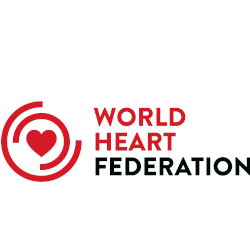Original Research
Effects of HIV Infection on Pulmonary Artery Pressure in Children
Abstract
Background: Pulmonary hypertension may complicate human immunodeficiency virus (HIV) infection and result in right ventricular (RV) failure and premature death. There are limited data of the effects of childhood HIV infection or antiretroviral therapy (ART) on pulmonary artery pressure (PAP).
Objectives: To establish if there is an association between childhood HIV infection or its treatment and pulmonary artery pressure.
Methods: The study conducted a cross-sectional study of 102 HIV-infected (48 ART-naïve, 54 ART-exposed) and 51 HIV-uninfected children in Jakarta, Indonesia, to estimate PAP using echocardiography parameters: tricuspid regurgitation peak velocity (TRV), left ventricular systolic index and diastolic eccentricity index (EI), and RV systolic function, assessed by tricuspid annulus plane systolic excursion. The association between either ART-naive or ART-exposed HIV and PAP was explored using general linear modelling adjusted for potential confounders.
Results: ART-exposed HIV-infected children had higher TRV (adjusted difference: 0.36 m/s; 95% confidence interval [CI]: 0.12 to 0.60; p = 0.003) and diastolic EI (adjusted difference 0.06; 95% CI: 0.01 to 0.11; p = 0.02) than did uninfected children. The EI in ART-exposed children was significantly higher than normal. ART-naive HIV-infected children had a lower tricuspid annulus plane systolic excursion (adjusted difference: –2.2 mm; 95% CI: –3.73 to –0.71; p = 0.004), despite no difference in TRV (adjusted difference: 0.18 m/s; 95% CI: –0.06 to 0.43 m/s; p = 0.14). Seven (13%) ART-exposed and 4 (8.3%) ART-naïve HIV-infected children had pulmonary hypertension. Within-HIV group comparisons showed that accounting for lower respiratory tract infections attenuated the lower RV systolic function in ART-naïve children but not in ARTexposed children (difference: –1.1 mm; 95% CI:–2.8 to 0.7 mm; p = 0.22), but not the higher left ventricular eccentricity indexes in the ART-exposed children (systolic difference: 0.07; 95% CI: 0.02 to 0.12; p = 0.007; diastolic difference: 0.08; 95% CI: 0.02 to 0.14; p = 0.006).
Conclusions: ART-exposed HIV infection is associated with higher estimated PAP. Reduced RV systolic function is seen in ART-naïve HIV infection. Lower respiratory tract infection partly explains lower systolic RV function in ART-naïve relative to ART-exposed HIV infection.
Highlights
- This study provides insights about the effects of antiretroviral therapy (ART)—naive versus ART-exposed pediatric human immunodeficiency virus (HIV) infection on pulmonary artery pressure.
- It appears that ART does not completely alleviate the risk of pulmonary hypertension among HIV-infected children.
- Our findings suggest that HIV-infected children, even having been treated, should be routinely screened for the development of pulmonary hypertension and managed appropriately.
- The role of ART in the development of pulmonary hypertension needs to be further studied.


